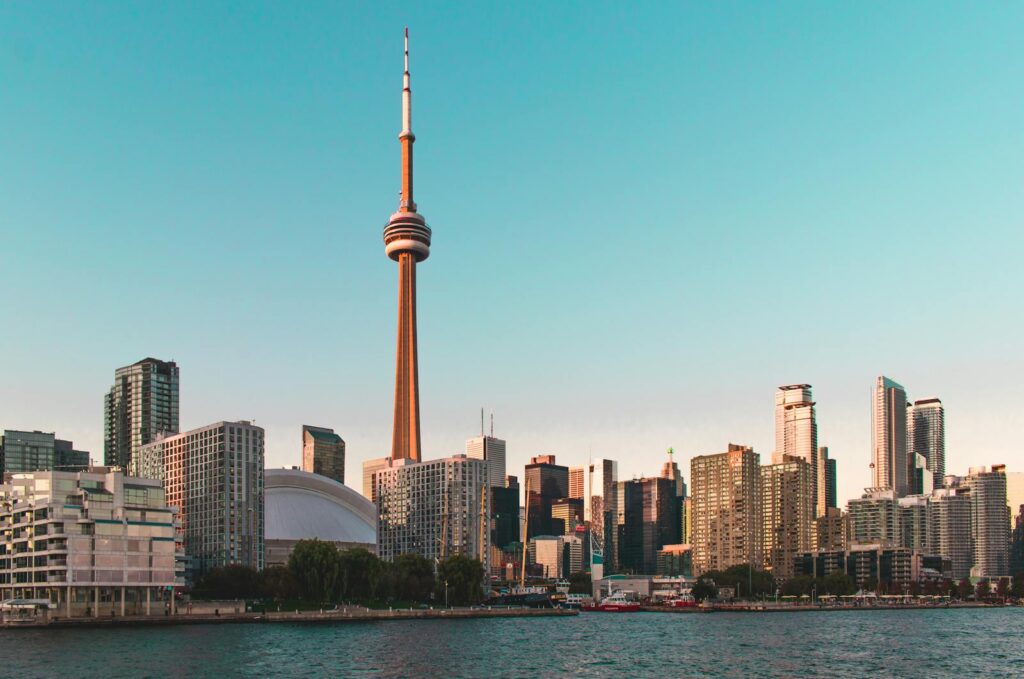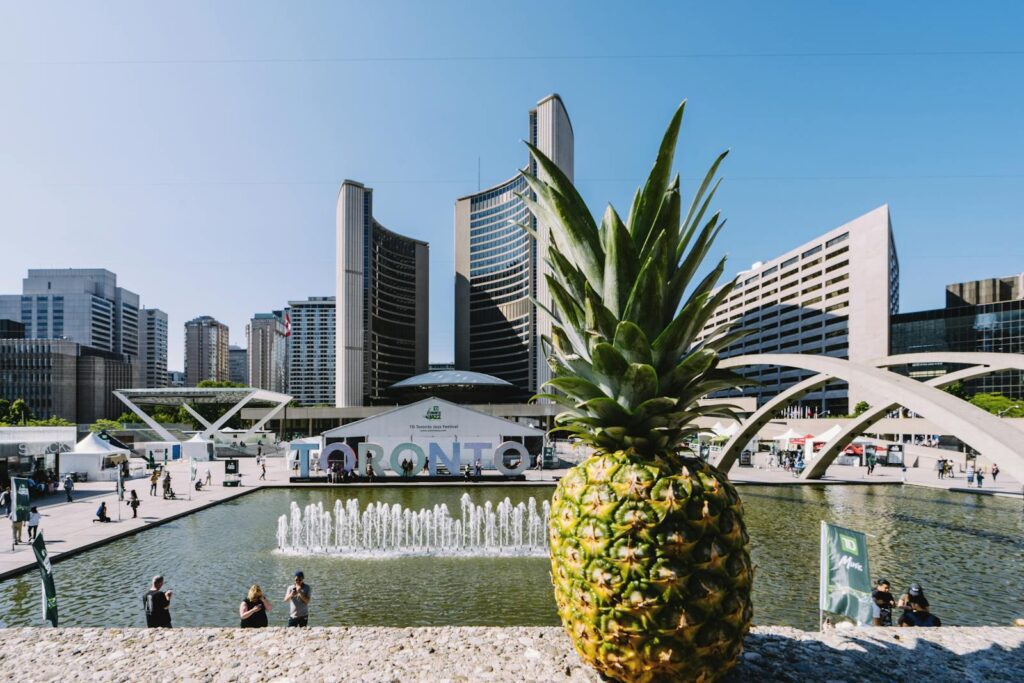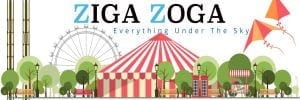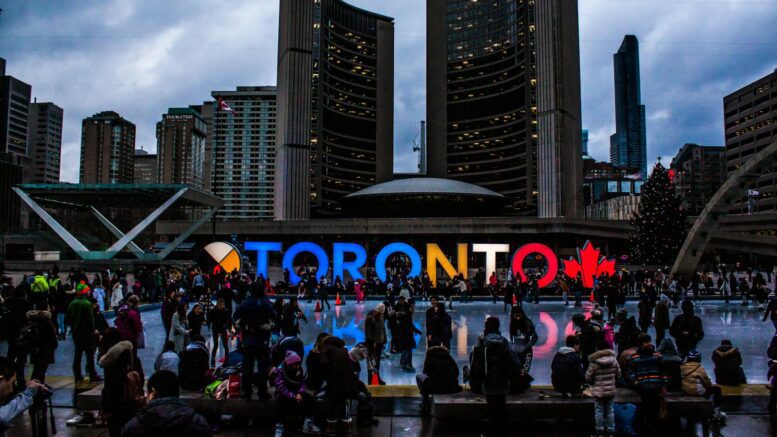Toronto’s neighborhoods are nearly as diverse as its peoples. From the sleek and swanky Yorkville area to the hotpot of cultures in the diverse Chinatown district, or the trendy, often budget options within the city center: Toronto will far from disappoint. With an efficient public transport system and grid-like layout, staying anywhere in the city puts you within easy access of every single attraction.
Downtown Toronto
Toronto’s downtown area is a bustling metropolis full of towering sky scrapers and huge shopping streets. Home to the longest street in the world, Yonge Street, and the hippest neighborhood in the city, Queen West, Downtown Toronto is full of visitors looking to find their latest buy, not to mention the many businessmen passing through this hectic business and financial district.
Hotels in Downtown Toronto
Blending in with the high rise buildings of Downtown Toronto, hotels in the area are usually tall and glass fronted buildings filled with well managed and comfortable suites and on-site restaurants.
Chinatown
The Chinese-Canadian population in Toronto is so large that there are multiple neighborhoods that reflect this in the area. In fact there are many Asian cultures living in the city, and Chinatown is a prime example of this. It is a hotpot of authentic Asian goods, from food to fashion items originating from Vietnam, Japan, China and more.
Hotels in Chinatown
Hotels in Chinatown take on a contemporary design, with sleek, clean furnishings and modern amenities. Their basic outdoor appearance is deceiving, as inside are comfortable and attractive suites that offer great value for money.
The waterfront
Lake Ontario is one of Toronto’s greatest assets and boasts a number of yellow sandy beaches and water sport hotspots that both locals and tourist enjoy in warmer months. The soft beaches and wood panelled walkways are a welcome contrast to the surrounding concrete city, where skyscrapers and the CN Tower looms overhead.
Hotels near the waterfront
Accommodation near Lake Ontario is more select, with budget chain hotels reigning supreme. Basic yet cosy hotels and motels are closest to the beaches, ensuring easy access and a comfortable base: an ideal set up when you have towels and goggles to carry.
Yorkville
A chic addition to the Toronto city scene is Yorkville; a stylish and high-class area brimming with swanky hotels and elegant dining. For those where price is no object, Yorkville is an attractive playground that holds the most sought after real estate in the whole city and some big celebrity names – if you can spot them.
Hotels in Yorkville
Deluxe suites and elegant hotels are found all over the Yorkville neighborhood. Big name chains and boutique hotels are on the list, where guest’s comfort takes priority, meaning lavish surroundings and top-class service.
Scarborough
Scarborough is a district in the eastern part of Toronto which started as a small, rural bunch of villages but has since merged into the city and developed a diverse community. There are a great number of Asian immigrants, giving it a diverse array of religious landmarks. You can also find natural points of interests, like the Scarborough Bluffs and Rouge Park.
Hotels in Scarborough
It is not surprising that the hotels in Scarborough are small in comparison to those in the jam-packed city center. The hotels within the Scarborough neighborhood are compact and convenient. Many of them popular chains, offering value for money in a great location.
Gay Toronto Travel Guide
Church-Wellesley Village is Toronto’s iconic gay neighborhood. Sitting on the north part of Church Street in Downtown Toronto, “The Village” plays host to over a dozen gay bars, gay restaurants, and a widening expanse of LGBT-heavy residential blocks. Many of its local establishments acted as backdrop to popular 90s American TV show “Queer as Folk”. Among other venues, the area features the world’s oldest gay bookstore (Glad Day Bookshop), an independent gay theatre (Buddies in Bad Times), gay saunas, coffee shops, and a community centre (The 519).
Recent years have seen the growth of a secondary gay-friendly hotspot, with many gay-friendly arts and nightlife venues popping up in “Queer West Village”, the trendy neighborhood stretching along Queen Street West from Trinity Bellwoods Park to Roncesvalles Avenue. These bars and arts spaces tend to attract a younger, mixed clientele.
Every June, Toronto’s gay village becomes the epicentre of North America’s largest LGBT festival, Toronto Pride, lasting ten days. Highlights include numerous stages with live performance and DJs, the Dyke March, the Trans March, and builds up to the enormous annual Pride Parade down Yonge Street.
Other annual festivals and events hitting Toronto each year include Toronto Fashion Week in March, the Inside Out LGBT Film Festival each May, Toronto Fringe Festival in July, Toronto International Film Festival in September, and Nuit Blanche in October. Halloween, known locally as “Gay Christmas”, limits part of Church Street to pedestrian traffic, as locals pack the streets in elaborate costumes.
Popular affordable accommodations include a number of large hotels near the Gay Village: Courtyard by Marriott Downtown Toronto, Chelsea Hotel, Toronto Marriott Bloor Yorkville, Holiday Inn Toronto Downtown Centre, and Bond Place Hotel. The Drake Hotel in Queer West Village serves as both a boutique hotel and popular nightspot with three separate bars, a restaurant and café. For higher-end accommodations, visitors should look to either the upscale Yorkville area (Four Seasons Hotel Toronto, The Hazelton Hotel, or the iconic Windsor Arms Hotel), or one of the entertainment district’s luxury properties (The Ritz-Carlton, Toronto or Shangri-La Hotel Toronto).
Where to shop in Toronto – a guide to the city’s best shopping areas
In recent years Toronto has grown into a principal shopping destination in North America. Its many neighborhoods offer a variety of different styles that cater to every type of budget. The mix of cultures makes for interesting one-of-a-kind pieces influenced by worldwide nationalities, while home-grown favorites are always around too.
Queen West
It may be known for its buzzing nightlife, but by day Queen West is an eclectic shopping destination. The street is lined by hip and unique boutiques as well as outlets, with both designer names and high-street favourites to choose from. Suitable for all styles and budgets, Queen West is the go-to area for many locals. The area was once quiet and modest, and its speedy rise to shopping fame has ensured that it remains charming yet unpretentious.
Chinatown
Chinatown is an Aladdin’s Cave for shoppers: its many stores have one-of-a-kind trinkets for your home, delicately decorated figurines and ornaments and an array of holistic remedies. In the centre you can get a real feel for the neighborhood with a food court, as well as some quirky accessories and fashion pieces. Tap Phong is a Torontonian favourite for kitchen utensils and household items while the Kensington Market just down the road has a bohemian vibe with its vintage shops and graffiti walls.
The Distillery District
The Distillery District is fairly new to Toronto, having opened in just 2003. It is a pedestrian zone, ruling out the danger of heavy traffic that so many shopping areas have, allowing shoppers to wander slowly from store to store. The area is a mix of Victorian Industrial architecture from its days as the Gooderham and Worts Distillery in the early 19th centry with 21st century influences. It is full of independent stores selling unique clothes and accessories. There are also numerous cafés, restaurants and galleries in the area.
Downtown
Toronto’s Downtown district is the proud owner of the longest street in the world: Yonge Street. This whopper of a road has over 600 retail stores, including independent boutiques, chain stores and bargain shops. The area also holds a number of impressive malls, like the Toronto Eaton Center. This particular mall brings an extra 300 stores to the street, making it one of the largest in Canada. Yonge and Dundas square are the heart of the area and often have live events there.
Leslieville
Leslieville is a trendy district east of the Don River that was once a small village named after George Leslie, a nursery owner. It has since grown into a middle-class area of Toronto, dubbed the hippest place to drink, dine and shop in the city. The region stretches along Queen Street East and is packed with vintage stores that are fit to burst with quirky fashion items and accessories. Leslieville is also known for its antique shops full of unique finds and its many cafés and galleries.
Bloor-Yorkville
Ultimate fashionistas will be in their element in the Bloor-Yorkville area. The up-market neighborhood is stylish and sleek and known for its haute couture labels. It is a discreet area tucked away between high rise buildings and the larger shopping malls of Downtown Toronto. The buildings still preserve their Victorian architecture but have transformed into boutique stores inside which contemporary designs are a colorful and innovative opposites.
Greektown on the Danforth
Toronto’s Greektown is a buzzing center for shoppers and socialites, and is a common meeting place for many. The Danforth Avenue is lined with markets and distinguishing retail stores. The shops sell a great selection of jewelry pieces including necklaces, earrings and headbands. Brides often come to the area to browse the various bridal shops for the perfect gown, while upscale boutiques, home ware stores and clothes stores keep the masses busy.


Be the first to comment on "Where to stay in Toronto – a neighborhood guide"